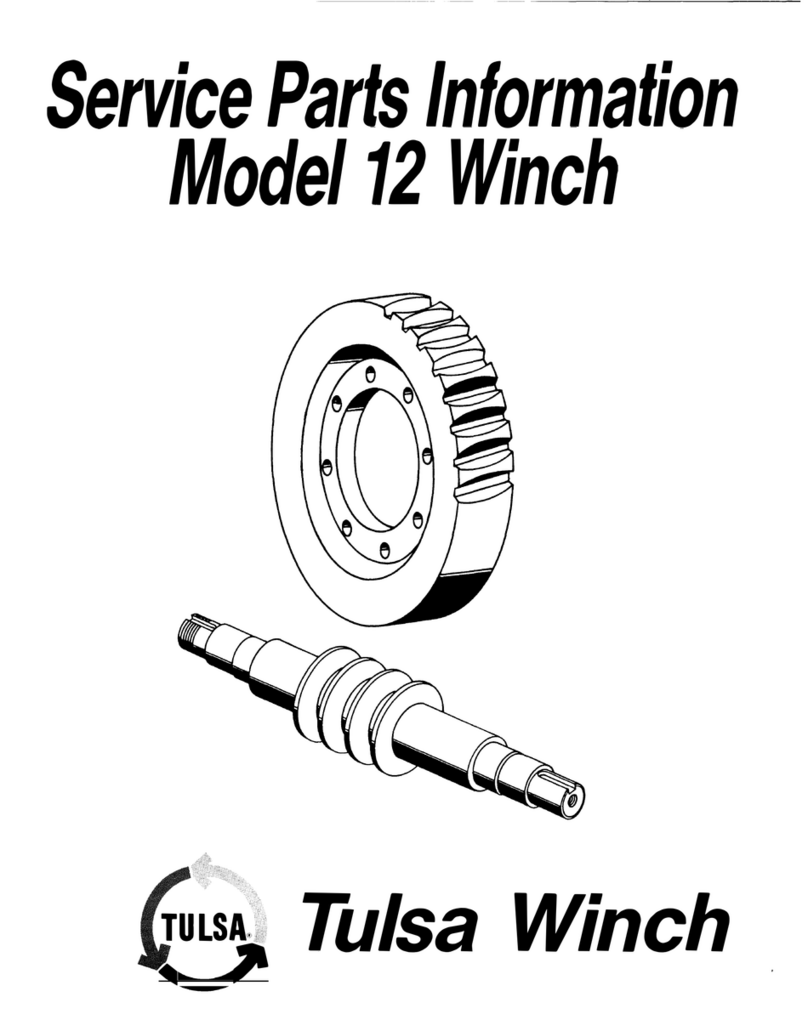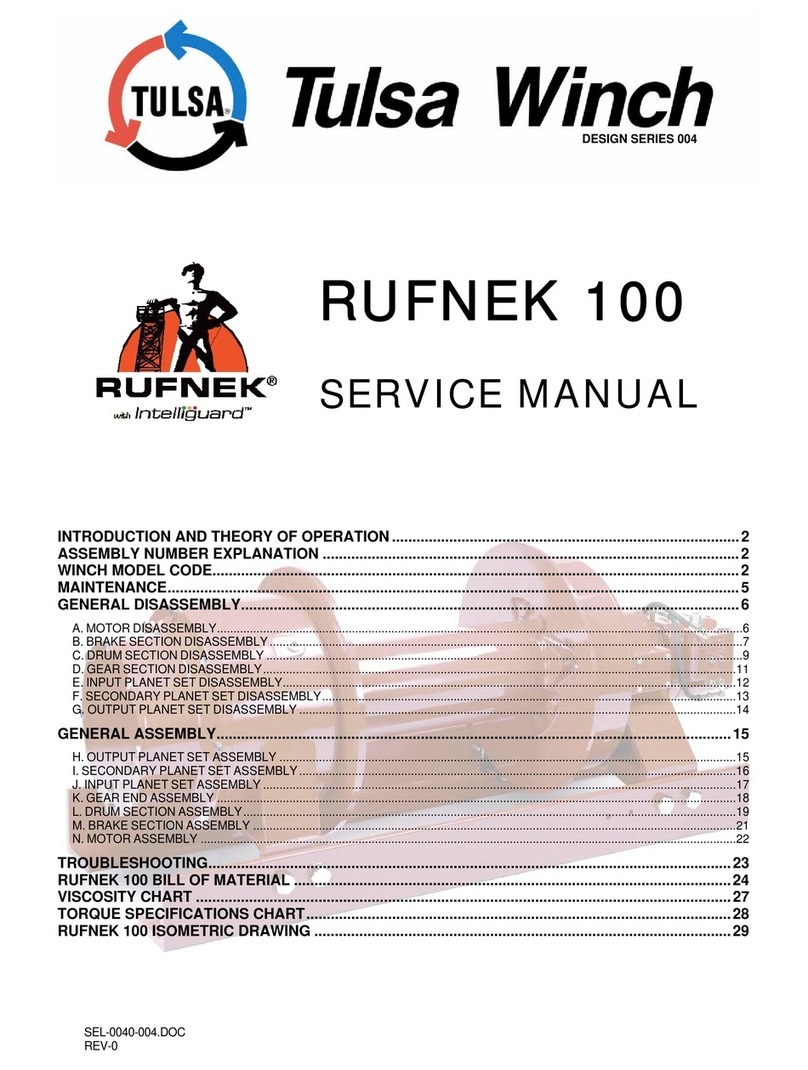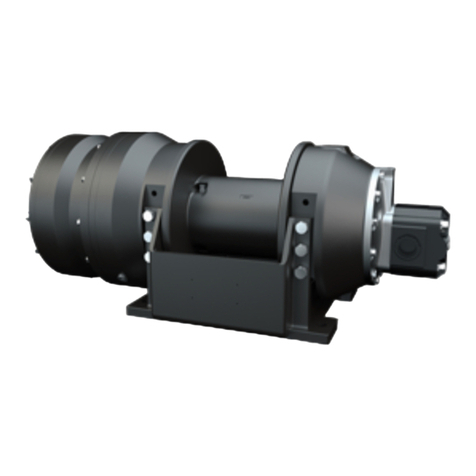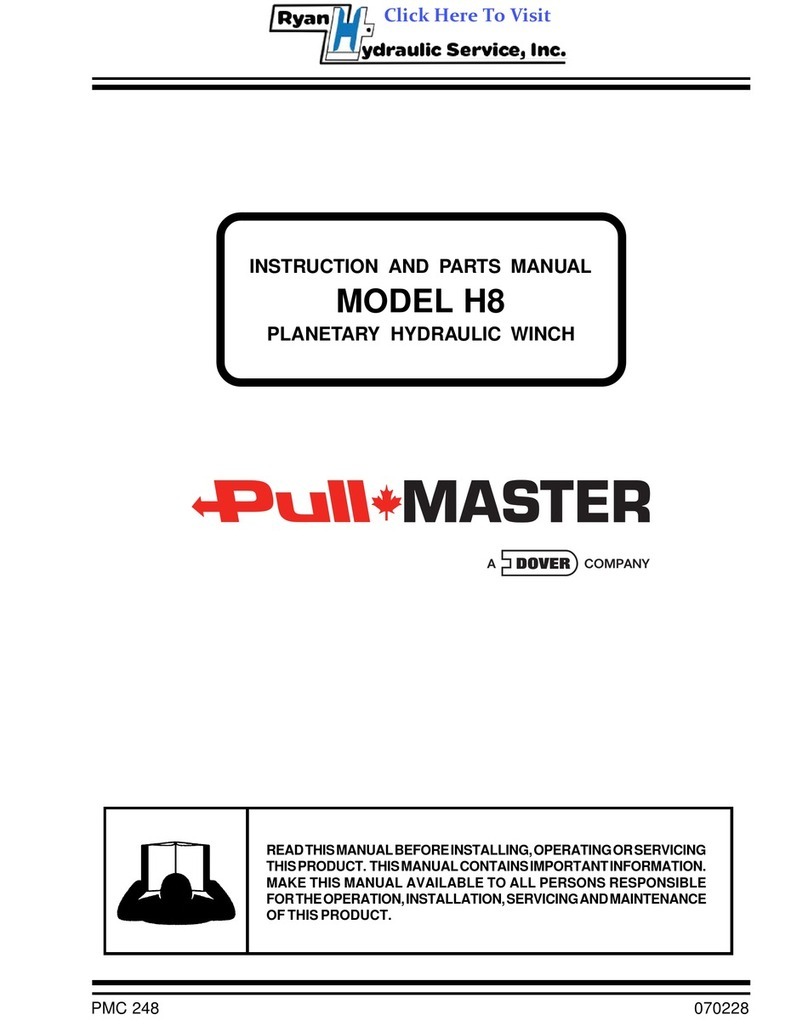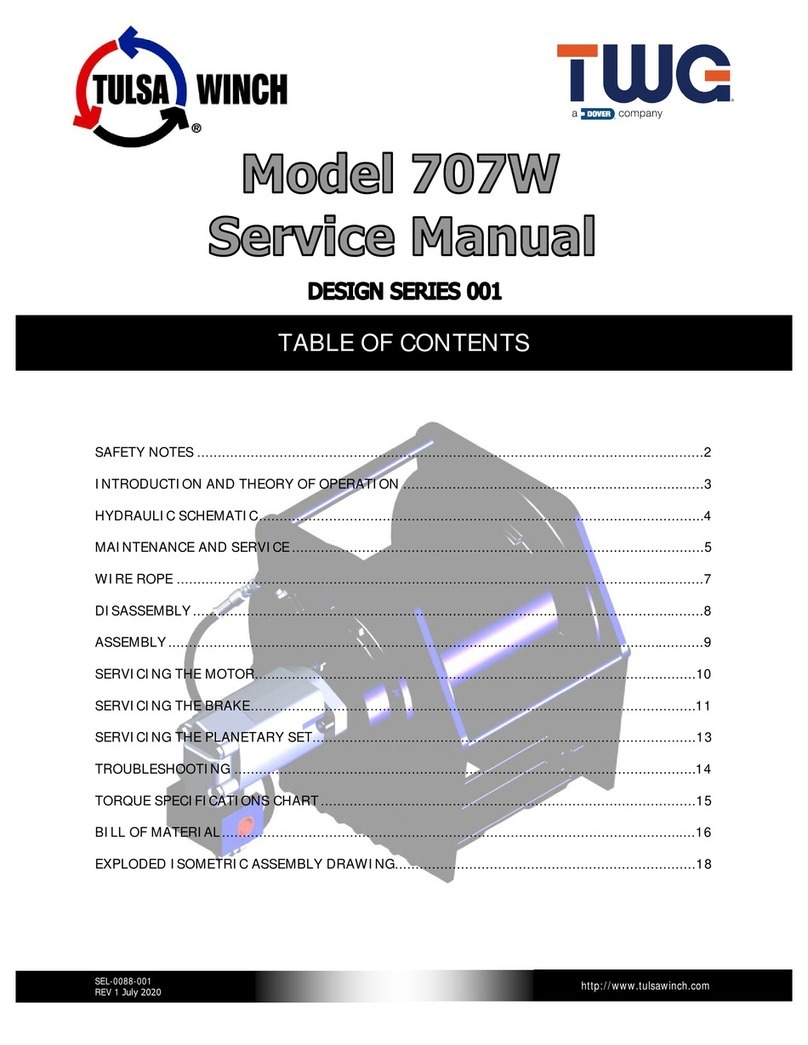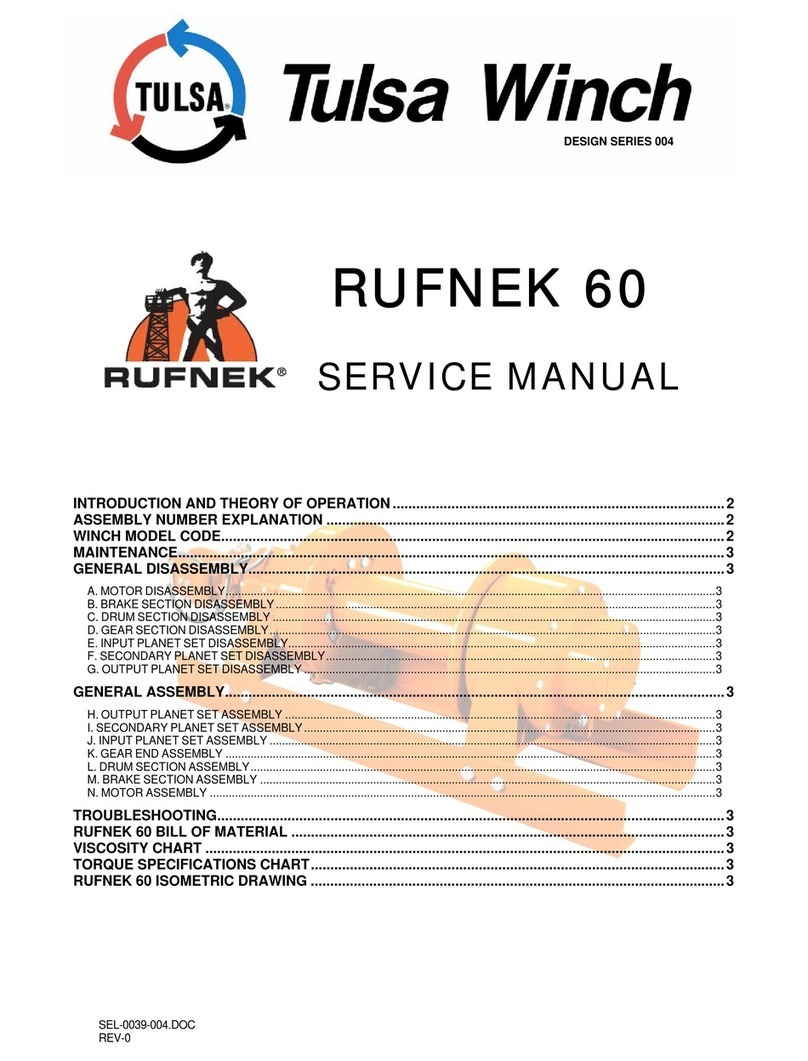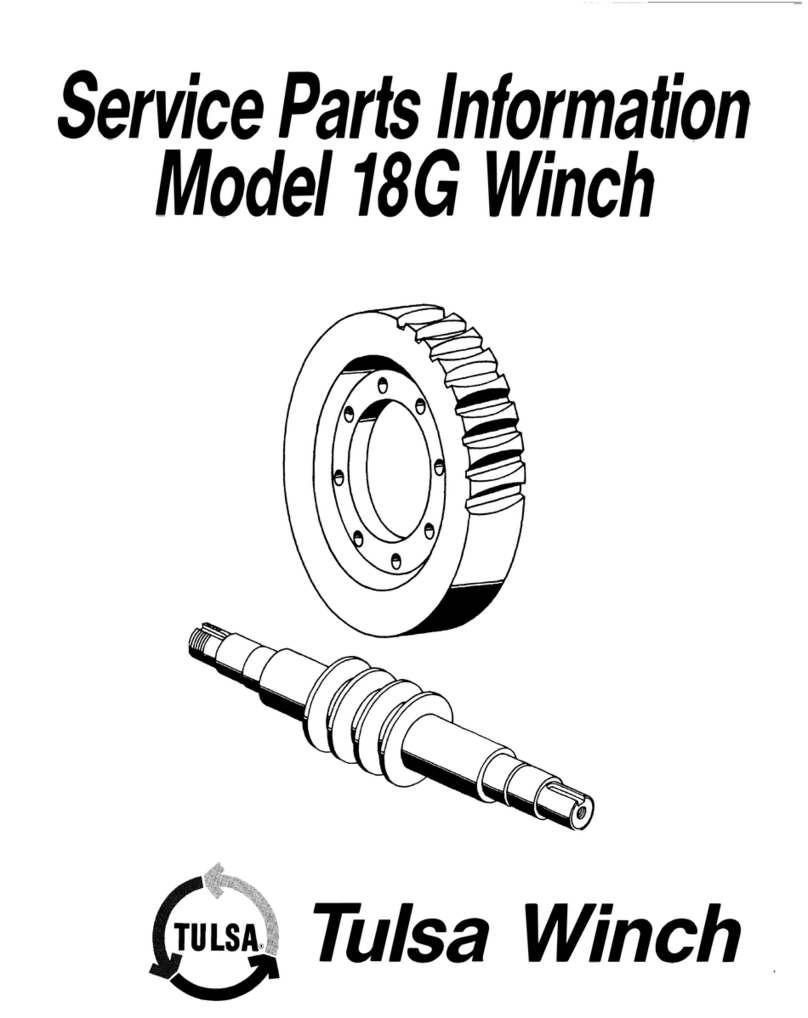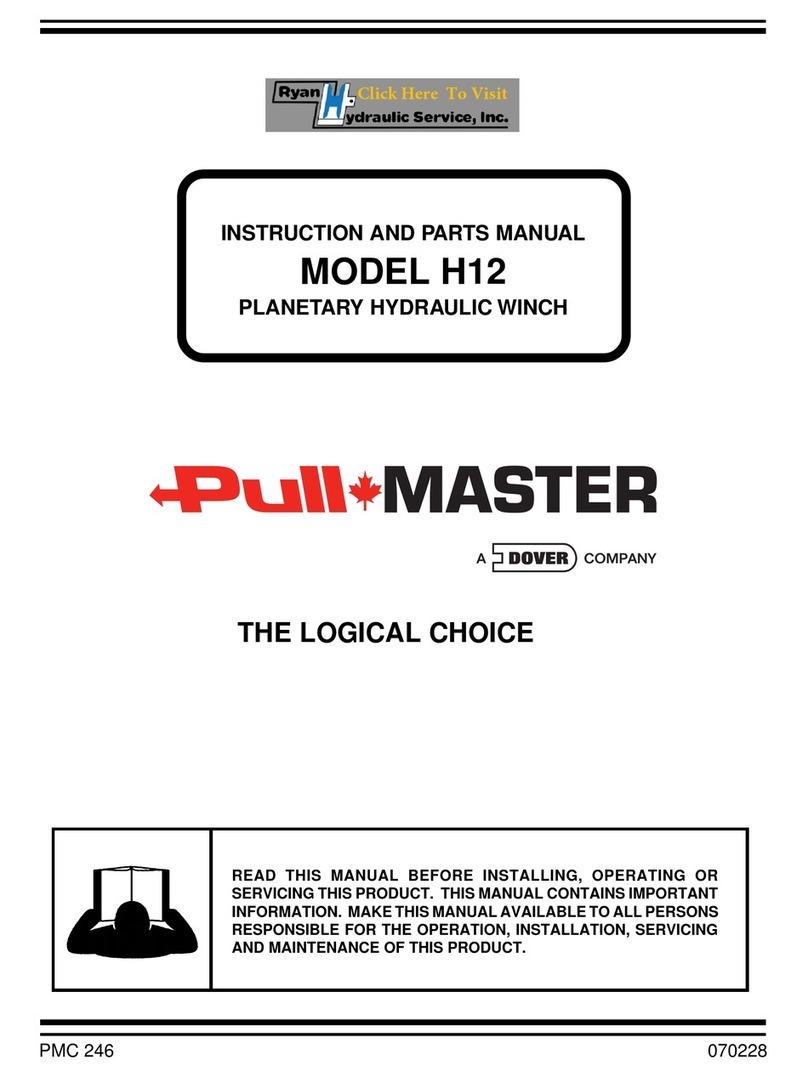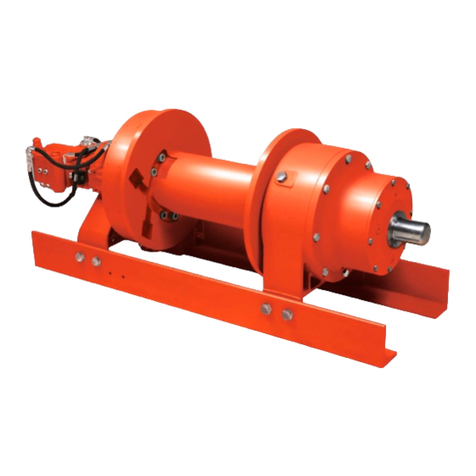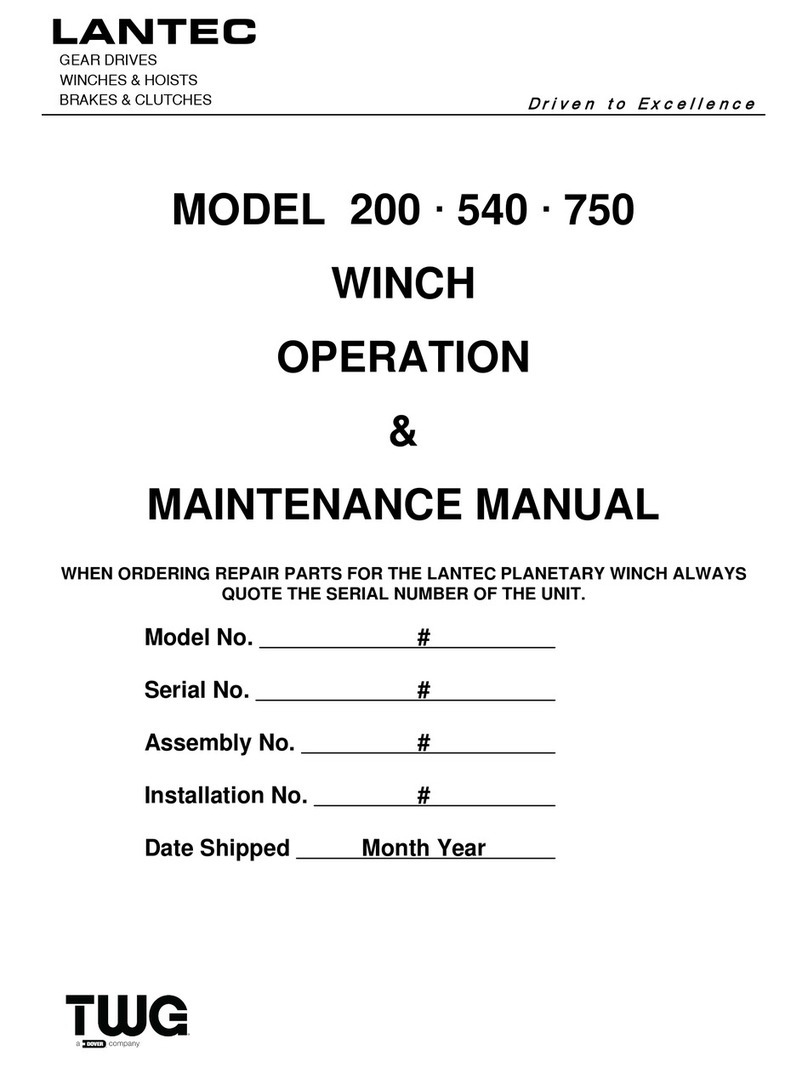
3
Operator:
Must read and understand the operating and service manual.
Both the SERVICE MANUAL and OPERATING AND MAINTENANCE MANUAL are
available online at http://www.team-twg.com/TulsaWinch/
Must never lift or move people with this winch.
This winch is not designed or intended for any use that involves moving people.
Must stay clear of the load at all times.
Ground personnel should remain a safe distance from the load and winch cable- at least 1 ½
times the length of cable measured from the winch to the load.
Must stay clear of the cable at all times.
A broken cable can cause serious injury or death.
Must avoid shock loads.
Shock loads can impose a strain on the winch that can be many times the design rating.
Must be aware of the fleet angle of the winch.
All loads should only be pulled with the load line perpendicular to the drum shaft; this is to
avoid excessive stresses on the winch and will help prevent the cable from building on one
side of the drum flange.
Must wear personnel protective equipment (PPE) if required.
Check the local, state and federal regulations for compliance.
Must insure that the drum clutch is fully engaged before hoisting.
A visual inspection of the drum clutch engagement is required before each winching
operation.
Must rig all loads secure before winching.
Pull the load line taut and inspect the condition of load for stability.
Must inspect the drum brake.
The drum brake is not a load holding device. It is designed to prevent over spooling of the
drum, causing the cable to bird nest on the drum. Inspect the brake band for worn lining
and the actuation method.
Must inspect the load control brake.
This winch is equipped with a form of dynamic braking. The worm brake is adjustable for
pay-out load control. Before a load is handled the load should be pulled tight and stopped to
check this brake.
Operation:
All winch controls must be well marked for function to avoid confusion.
Insure that the PTO is disengaged when the winch is not in use.
All winch controls must be located to provide the operator with a clear view of the load.
The clutch must be inspected daily for proper operation.
The winch cable should be inspected daily for serviceability.
A minimum of five wraps of tightly wound cable must remain on the drum.



